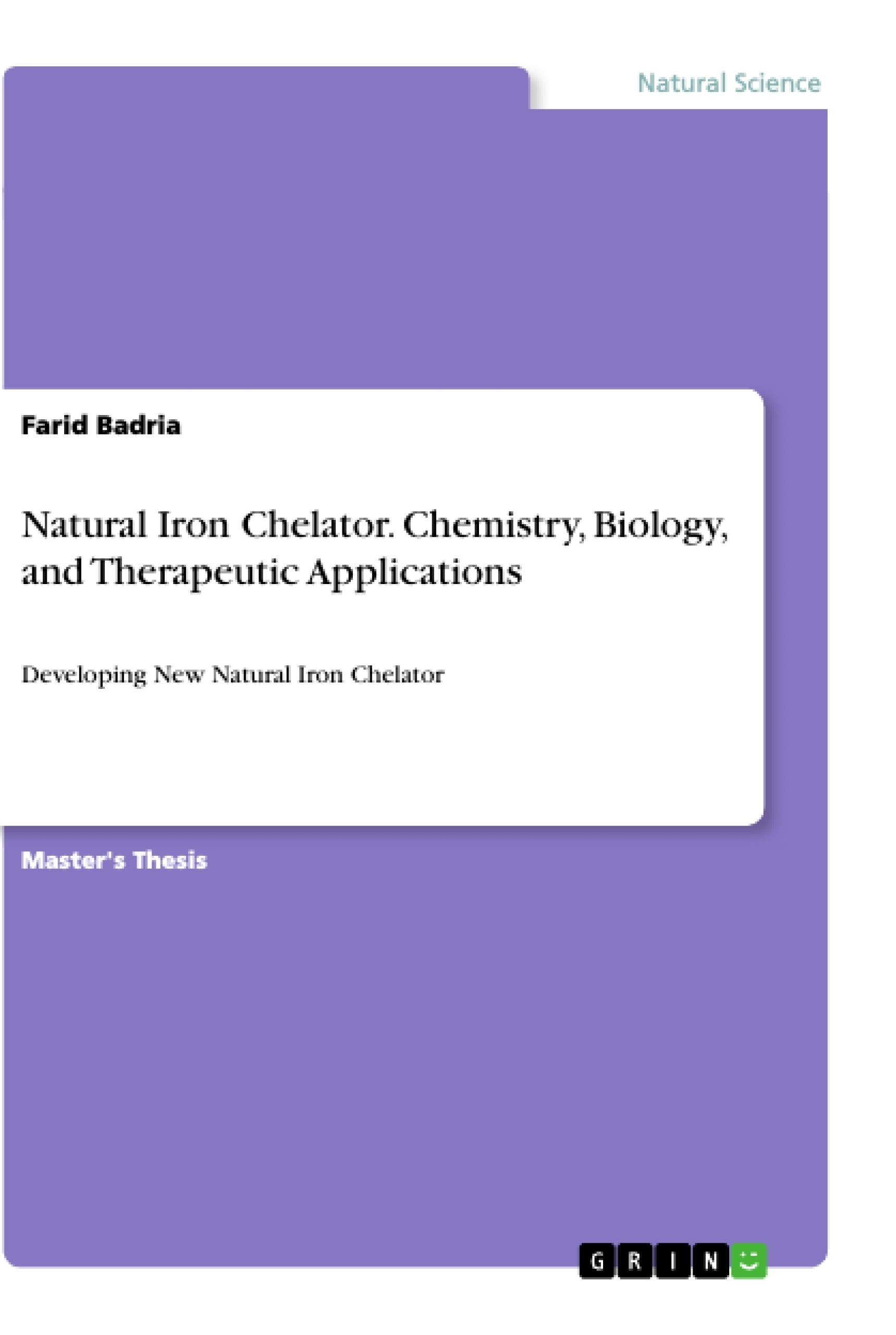Iron-overload disorder (hemochromatosis) is one of the major reasons of morbidity, caused by genetic disorder of protein involved in regulation of iron absorption or due to multiple transfusion of iron in chronic anemia for example thalassemia. Resulting in initiation and propagation reactive oxygen species which attacking macromolecules of cells such as proteins, lipids, RNA and DNA and ultimately cells death. Leading to a state of oxidative stress associated with many of health problems such as heart failure, liver cirrhosis, fibrosis, gallbladder disorders, diabetes, arthritis, infertility, and cancer. The available chelators drugs can forming soluble, stable complexes with excessive iron andexcreted it in the feces and/or urine. But due to, their high cost, severe side effects, poor oralbioavailability or short plasma half-life make them suboptimal.
Sixteen plant leaves were collected, authenticated and subjected to exhausted extraction by 70% methanol. The obtained leaves extracts were screened for their iron chelation activity using 2,2`- bipyridyl assay. Among the screened extracts, the Mangiferaindica leaves showed the highest iron chelation activity(69.71 ± 0.27%)comparable to positive control, EDTA(70.30 ± 0.08%).
The total extract of theM. indica leaves was partitioned with different solvents (petroleum ether, methylene chloride, ethyl acetate and n-butanol). The resultingfractions were screened for their iron chelation activity using 2, 2`- bipyridyl assay.EtOAcfractionhad the significant chelating activity (123 ± 2.75%),more potent than EDTA(64.12 ± 1.48%) and total extract of M. indica leaves (69.71 ± 0.27%).
The mangiferin compound was subjected to comparison with desferal® to assurance the quality of its chelating activity throughdetermine the active sites responsible of its chelating property and evaluation the effect of its iron-stable complex on its antioxidant activity.
According to introduced results, through different biological analysis. We found that, the iron-overloaded rats treated with ethyl acetate fraction had significant decreases in iron accumulation within liver and spleen (the major organs affected by iron overload). We assume that, the mangiferin may protect from reactive oxygenspecies-stimulatedseveral of disordersby its iron chelatingactivity which promotes its antioxidant property.
Table of Contents
- I. Introduction
- Iron disorders in the human body
- Natural compounds as alternative chelating agents
- Agricultural wastes with reported iron chelating activity
- Chemical and biological activity of Mangifera Indica L. leaves
- Iron chelation assays
- II. Phytochemical screening and iron chelating activity of Mangifera indica L. leaves
- III. Bio-guided fractionation of iron chelators from Mangifera indica L. leaves
- Identification of the isolated compounds
- IV. A comparative study of the iron chelating property of mangiferin Vs. desferal®
- V. In-vivo investigation of the total extract (TM) and the ethyl acetate fraction (EM) of Mangifera indica L. leaves in iron overloaded rats
Objectives and Key Themes
The main objective of this work is to explore agricultural residues rich in polyphenolic compounds for their iron chelating activity, to isolate and evaluate these compounds as potential natural iron chelators, and to compare their efficacy to commercially available iron chelators. The study aims to identify and evaluate the most effective iron chelator from agricultural wastes through a series of steps, including chemical and biological analysis.
- Iron chelating activity of agricultural residues
- Isolation and characterization of natural iron chelators
- Comparative evaluation of natural iron chelators with commercially available drugs
- In-vivo investigation of the efficacy of natural iron chelators in iron overloaded rats
- Exploring the potential of natural compounds as a safe and effective alternative to existing iron chelators
Chapter Summaries
- Chapter I: Introduction: This chapter provides an overview of iron disorders in the human body, including the metabolism of iron, iron blood disorders, the classification and causes of iron overload, the complications of iron overload, and existing iron overload medications. It also discusses the potential of natural compounds as alternative chelating agents and highlights the importance of exploring agricultural wastes as a source for biologically active compounds.
- Chapter II: Phytochemical Screening and Iron Chelating Activity of Mangifera indica L. leaves: This chapter focuses on the phytochemical screening and iron chelating activity of mango leaves. It investigates the iron chelating activity of different extracts of mango leaves and analyzes the correlation between iron chelating activity and total flavonoid and phenolic content, as well as antioxidant activity.
- Chapter III: Bio-guided Fractionation of Iron Chelators from Mangifera indica L. leaves: This chapter details the isolation and characterization of iron chelators from mango leaves. It describes the process of bio-guided fractionation and identifies the isolated compounds, including mangiferin and iriflophenone-3-C-ß-D-glucoside.
- Chapter IV: A Comparative Study of the Iron Chelating Property of Mangiferin Vs. Desferal®: This chapter compares the iron chelating properties of mangiferin to a commercially available iron chelator, Desferal®. It explores the chelation pattern of mangiferin and investigates the antioxidant activity of the mangiferin-iron complex compared to the Desferal®-iron complex.
Keywords
This book focuses on natural iron chelators, agricultural wastes, polyphenolic compounds, iron chelation assays, bio-guided fractionation, mangiferin, iriflophenone-3-C-ß-D-glucoside, antioxidant activity, in-vivo studies, iron overload, hemochromatosis, and alternative therapies. It delves into the chemical and biological properties of these compounds and explores their potential as safe and effective alternatives to existing iron chelators.
- Quote paper
- Farid Badria (Author), 2019, Natural Iron Chelator. Chemistry, Biology, and Therapeutic Applications, Munich, GRIN Verlag, https://www.grin.com/document/509342




